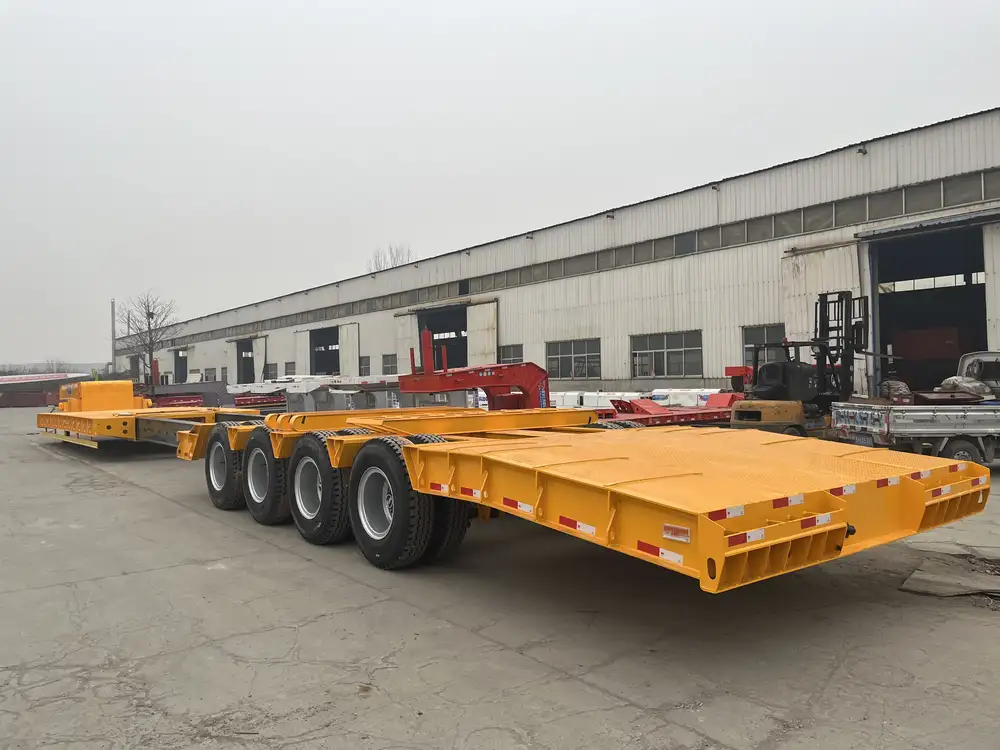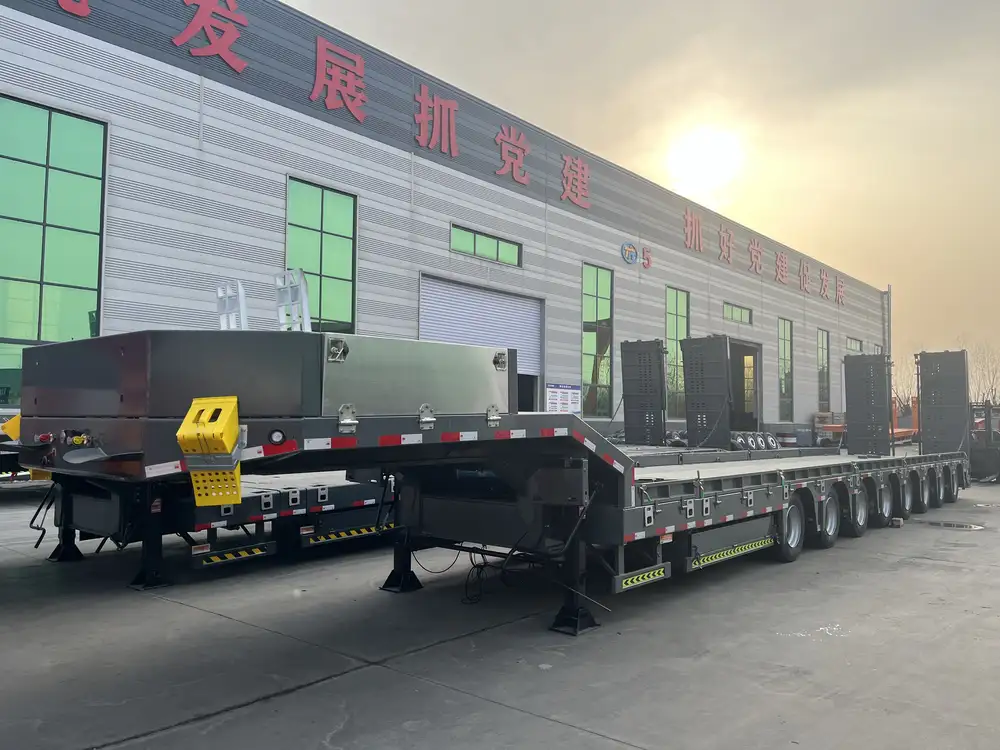In the realm of transportation and logistics, the terminology that defines various components can often appear cryptic. One such term that captures interest is “semi-trailer.” This article dives into the intricacies of why this particular nomenclature is employed, tracing its roots while also providing valuable insights into its functionality, design, and applications.
The Etymology of “Semi-Trailer”
To appreciate why we refer to it as a “semi-trailer,” we first need to dissect the term itself:
“Semi”: This prefix derives from the Latin “semi,” meaning “half.” In the context of semi-trailers, it signifies that these trailers are only part of a complete vehicle system. Unlike a full trailer that has its own axle and wheels, a semi-trailer depends on the tractor unit for support.
“Trailer”: In English, the word “trailer” generally refers to a vehicle designed to be towed. A trailer can be an essential part of a transport operation, providing additional cargo space without the burden of a powered unit.
Together, “semi-trailer” refers to a vehicle type that is designed to be towed, but by means of connection to a tractor unit, which supports the front end of the trailer. Therefore, it literally means a “half trailer,” emphasizing its unique operational structure as compared to fully independent trailers.
The Anatomy of a Semi-Trailer
Understanding the design and mechanics of a semi-trailer further elucidates its functionality. Here, we categorize the key components:

Key Components
| Component | Description |
|---|---|
| Fifth Wheel | A coupling mechanism that allows the semi-trailer to connect securely to a truck’s tractor unit. |
| Kingpin | A projecting part on the semi-trailer that engages with the fifth wheel. It is crucial for stability and connection. |
| Axles | Essential for load bearing; a typical semi-trailer may have two to four axles depending on the design and load capacity. |
| Cargo Area | The enclosed space specifically designed to transport various goods and may vary in dimensions and configuration. |
| Frame | The underlying structure that supports the entire trailer, made from durable materials such as steel or aluminum. |
Load Distribution and Weight Capacity
The design of a semi-trailer plays a critical role in load distribution, allowing for the transport of larger quantities or heavier items. Improved balance is achieved by hitching the towing vehicle in a way that distributes weight effectively across the axles of both the tractor and the trailer.
Types of Semi-Trailers
Flatbed Semi-Trailers: These are open trailers without sides or a roof, ideal for transporting heavy loads, machinery, or construction materials.
Enclosed Semi-Trailers: Also known as box trailers, these provide full protection from the elements, making them perfect for goods that require safeguarding from weather conditions.
Reefer Semi-Trailers: Equipped with refrigeration units, these trailers transport perishable items that need to remain at specific temperatures.
Tanker Semi-Trailers: Designed for carrying liquids, such as fuel or chemicals, they have specialized safety measures to prevent leaks.
Each type comes with its unique construction requirements, weight regulations, and applications, further illustrating the versatility of semi-trailers in the logistics industry.

The Role of Semi-Trailers in Modern Freight Transport
Economic Significance
Semi-trailers have revolutionized freight transport by optimizing load capacities and enhancing the efficiency of the supply chain. Their structural design allows for the transportation of larger quantities of goods, thus reducing shipping costs per unit.
Statistics:
- According to the American Trucking Association, trucks carry approximately 71% of all freight transported in the United States.
- The average semi-trailer can haul between 20,000 to 34,000 pounds (9,072 to 15,422 kg) of cargo, emphasizing their importance in heavy cargo transportation.
Flexibility and Adaptability
The semi-trailer concept allows for unparalleled versatility within the logistics sector. Shippers can easily adapt to fluctuating market demands without needing to invest in new vehicles entirely. By changing the type of semi-trailer, businesses can pivot to accommodate different freight types without switching operators.

Environmental Considerations
As sustainability becomes a priority worldwide, utilizing semi-trailers can lead to more eco-efficient transport. The capacity to move large quantities minimizes the number of trips needed, which correlates with reduced fuel consumption and emissions.
Common Queries and Misconceptions about Semi-Trailers
1. What distinguishes a semi-trailer from a traditional trailer?
A semi-trailer is not self-supporting; it relies on the fifth wheel of a tractor for stability. In contrast, a traditional trailer stands independently on its own wheels and has no such support system.

2. Can semi-trailers be used for all types of cargo?
While semi-trailers can transport a variety of cargo types, each design (flatbed, reefer, enclosed, tanker) serves specific needs. Understanding the requirements for each cargo type ensures the right trailer is used, enhancing safety and compliance with transportation regulations.
3. What are the legal regulations surrounding semi-trailers?
Understanding weight limits, size restrictions, and cargo-specific regulations is critical for fleet operations. Regulations often vary by country and state, necessitating compliance to avoid hefty fines and liabilities.
Conclusion: A Continuous Evolution
The semi-trailer remains a cornerstone of modern logistics, combining complex engineering with practicality. Its design encapsulates both historical context and contemporary relevance.
As the transport industry continues to evolve, the semi-trailer’s adaptation to new technologies (like telematics, electric models, etc.) highlights its enduring significance. Promoting efficient freight movement remains essential as businesses worldwide respond to the dynamic needs of global commerce.
In closing, understanding the term “semi-trailer” transcends mere curiosity; it fosters deeper appreciation for an integral piece of the logistics puzzle. The next time you see a semi-trailer on the road, you’ll recognize it as a vital link in the expansive tapestry of global trade and supply chain efficiency.



